Have you ever considered selling on Amazon beyond the traditional, third party sellers, or first, third party seller, first, third party seller first, sellers third-party approach? Amazon Vendor Central might be the platform for you in the Amazon marketplace. It allows you to streamline your seller administration, and concentrate on supplying a single customer—Amazon itself.
This article will provide an in-depth understanding of Amazon Vendor Central, how to join it, its pros and cons, and some strategies for success.

What is Amazon Vendor Central?
Vendor Central is an exclusive platform where you sell your products directly to third and first party seller central, Amazon, acting as the third party seller to amazon's platform central and to both amazon's customers, vendor central, as their first party supplier. Amazon places an order with you, you provide the stock, and then Amazon takes care of the selling part.
It's a suitable choice for businesses who prefer not to deal directly with customers, but it also presents certain challenges you should be aware of.
Amazon Vendor Central Login
Once Amazon approves your request, you will gain access to Vendor Central login page.
Here, you can view purchase orders here, manage shipments, purchase orders, check payments, purchase orders, and more.
If you've forgotten your Amazon Vendor Central password, it's easy to reset it. Simply click the "Forgot Password" link on the login page and follow the instructions provided.
You will be asked to confirm your identity by entering a verification code sent to your email address, after which you can create a new password and log into your account.
If you're having trouble logging into your Amazon Vendor Central account, you may need to check your username and password to make sure they're correct.
If they are, it could be a sign that your Vendor Central account has been deactivated. To reactivate your your seller central account or your other amazon vendor express seller's amazon vendor express seller central account again, you should contact Amazon customer service for assistance.
Comparison: Amazon Vendor Central vs. Amazon Seller Central
Amazon Vendor Central and Seller Central are two different platforms, and the key distinction is who the end-seller is. In Vendor Central, you sell to Amazon, and Amazon resells your items. On the other hand, Seller Central lets you sell directly to Amazon users.
Vendor Central offers more advertising options but gives you less complete control over pricing and logistics. On the other hand, Seller Central is open to everyone, allows you to set your retail or wholesale price, and offers flexible shipping logistics options.
Can I sell via Amazon Vendor Central and Amazon Seller Central?
Amazon has several options for businesses that have one or two partnerships with Amazon. In some circumstances it may be possible for you to sell the product without overlapping SKUs as a Tier 2 under a certain set of conditions.
It gives Amazon customers a better chance of gaining a loyal customer base by using this hybrid strategy. However, this must also get Amazons support.
The Amazon Hybrid Strategy: Combining Vendor Central and Seller Central

The Amazon hybrid strategy is an approach where businesses utilize both Amazon Vendor Central and Amazon Seller Central to maximize their sales potential and customer reach. By leveraging the strengths of both platforms, sellers can benefit from increased visibility, a diverse range of advertising direct fulfillment options, and better control over pricing and logistics.
One of the key advantages of adopting a hybrid strategy is the ability to cater to different types of customers. Vendor Central allows you to sell directly to Amazon, with direct fulfillment, which may attract customers who trust Amazon's brand and the convenience of Prime shipping.
Meanwhile, a Seller Central account enables you to sell directly to customers, giving you more control over pricing, shipping, and customer service, which can help you build a loyal customer base.
Another benefit of using a hybrid approach is diversifying your revenue streams. By selling directly through both platforms, you can minimize the impact of any changes in Amazon's policies or market conditions that may affect your sales on one platform. This can help you maintain a steady cash flow and decrease your overall business risk.
To implement a successful hybrid strategy, it's essential to carefully plan and manage your inventory and pricing. You will need to avoid overlapping SKUs and ensure that you comply with Amazon's guidelines for both platforms. Additionally, you should closely monitor your sales performance, adjusting your strategy as needed to optimize your results.
Amazon hybrid strategy can be a powerful way to expand your own business model and reach a broader customer base.
By combining the advantages of both Amazon Vendor Central and Amazon Seller Central and vendor yourself, you can maximize your sales potential, diversify your revenue streams, and gain better control over your business operations in the Amazon marketplace.
Pros and Cons of Amazon Vendor Central
Pros of Amazon Vendor Central:
-
Increased exposure: As an Amazon vendor, your products are sold directly to Amazon, which can increase your product visibility and potentially lead to higher sales volume.
-
Buy Box advantage: Vendors often have a better chance of winning the Buy Box, as Amazon tends to prioritize its own inventory.
-
Access to Amazon Marketing Services (AMS): Vendors have access to AMS, which allows them to create and manage advertising campaigns to boost product visibility and sales.
-
Enhanced content options: Vendors can create A+ Content (formerly known as Enhanced Brand Content) to showcase their products with more detailed descriptions, images, and multimedia elements, which can help improve conversion rates.
-
Inventory management: Amazon takes care of inventory management, order fulfillment, shipping, and customer service, allowing vendors to focus on other aspects of their business.
Cons of Amazon Vendor Central:
-
Limited control over pricing: As Amazon purchases your products at wholesale prices, they have the final say in setting the retail price, which may affect your profit margins.
-
Longer payment terms: Vendors typically experience longer payment terms, ranging from 30 to 90 days, which can impact cash flow.
-
Complex negotiations: Vendors often need to negotiate contracts, terms, and conditions with Amazon, which can be time-consuming and complicated.
-
Risk of chargebacks and deductions: Amazon may impose chargebacks or deductions for various reasons, such as late shipments or damaged products, which can negatively impact your bottom line. beBOLD can help with our Vendor Recovery Services.
-
Competition with Amazon: Since Amazon also sells its private label products, there's a chance that your products may compete directly with Amazon's offerings, making it harder to stand out and maintain sales.
Considering these pros and cons can help you decide if Amazon Vendor Central is the right choice for your business.
Joining Amazon Vendor Central
Vendor Central is an invitation-only platform. Amazon's vendor recruitment team looks for potential new vendors from among successful Seller Central sellers, marketplace sellers with popular products, and exhibitors at trade shows with unique products.
If your products catch their attention, Amazon will send you an invitation to join Vendor Central. After agreeing to their terms, you'll gain access to the platform.
This overview should provide a good starting point for anyone considering Amazon Vendor Central. Remember, it's not suitable for everyone. It's a better option for manufacturers and wholesalers who prefer to have Amazon handle logistics, support, and returns.
5 Tips to Be Successful As a Member of Amazon Vendor Central

-
Optimize your product listings: Ensure that your product titles, descriptions, and images are accurate and engaging. Use relevant keywords and high-quality images to improve visibility and attract customers. A+ Content (previously Enhanced Brand Content) can help you provide more detailed information, improving conversion rates.
-
Utilize Amazon Marketing Services (AMS): Take advantage of Amazon Advertising to create targeted advertising campaigns for your products. Utilize Sponsored Products, Sponsored Brands, and Sponsored Display ads to increase product visibility, drive traffic, and boost sales.
-
Monitor inventory levels and lead times: Regularly check your inventory levels and lead times to avoid stockouts or late shipments. Accurate forecasting and efficient supply chain management can help you maintain optimal inventory levels and meet Amazon's requirements.
-
Focus on customer satisfaction: Although Amazon handles customer service for Vendor Central members, it's essential to ensure that your products meet customer expectations. Monitor customer reviews and feedback to identify areas where improvements can be made to enhance customer satisfaction and maintain a positive reputation.
-
Analyze performance metrics and data: Regularly review your Vendor Central performance metrics and data to identify trends, opportunities, and areas for improvement. Use insights from the data to optimize your product listings, pricing strategies, marketing campaigns, and inventory management to maximize your success as an Amazon vendor.
Will my product sell more units if it's sold by Amazon themselves?
Some firms use Vendor Central to increase sales of their own products sold only on Amazon. It is possible for shoppers to prefer buying from Amazon if Amazon is more advantageous in searches or in buying boxes.
Some seller central and vendor central accounts companies are reportedly reporting more unit sales products and selling directly more than vendors. In fact, however, that is not always the best thing. Some businesses even reported sluggish sales when moving from Selling Central into Vendor Central accounts.
Don't Rely Solely on Amazon Traffic
It may take some time to start up your SEO efforts. While you wait, get traffic to own website through advertisements on sites outside of Amazon. Other means you can generate demand are:
A+ Content
The vendor web interface can now create product lists. Vendors can also use modules to provide preset images, heading texts, comparisons etc. Basic A+ content template is available for free with the self service option in your application.
If you choose Amazon's option for building your page, it costs according to modules picked and season. Prime content is available only by selected suppliers (mostly major brands) and contains looped video animations sponsored product ads, interactive visuals galleries and content videos.
Premium A+ Content
Amazon A+ Content is a standard feature available to all Amazon Sellers and free as one of the many benefits of Amazon Brand Registry.
With A+ Content, a product listing can have more than a plain text description and standard photo reel–it can include high quality multimedia photos and videos alongside eye-catching information to share the product story, and not just the product appearance.
Some of the features that Premium Amazon A+ offers are:
Multiple, varied images of a product
-
Strategically concise introduction
-
Video
-
Bullet points
-
360° product views
-
Matrix comparison charts
-
“What’s in the box” section
Will Amazon order my products immediately?
It is important to note the fact that placing an order at Amazon vendor central platform does NOT necessarily guarantee immediate delivery. Order processing is automatic.
Amazon will check the seller central sales history to determine whether or not the seller central product is available for purchase. Sometimes that means a small order may occur.
Momentum will increase when demand wholesale price for a product increases.
What is Vendor Initiated orders (Born to Run)?
Born to Run allows you to request orders for a product by telling us how many units you expect to sell in 10 weeks.
-
We will review your submission, and, if approved, we will buy up to the indicated amount. Units that do not sell within the 10-week sell-through period are subject to returns or retention fees (at your election).
-
You can use this feature to increase your inventory position during new product launches or marketing campaigns.
-
For further questions, open a case via Contact us and select Born to Run as the issue type.
Ready to Fill Orders?
The first order was amazing. You'll think that you have the best opportunity for the big deal you want!
Why are there so few stocks available? Most businesses are unable to make enough money to run large warehouses or stockrooms with goods.
However, it's important to prepare yourself as well for Amazon's needs. Upon cancellation of an order the customer has the option of cancelling the next purchase order immediately. Amazon offers some options for placing backorders.
If you have no inventory, the merchandise will appear as non-available.
What if I don't have the stock to fill a purchase order?
When you can't fulfil your order, you are able to choose between two alternatives. It can also go back into your order once approved or cancelled. However, if your inventory is running low, then you can always mark items permanently unavailable so that Amazon does not include them on their order.
If Amazon cancels a purchase orders a particular amount of orders over a specified amount, Amazon will charge back the money. They are gonna fine you for not supplying everything to the Amazon fulfillment center.
Amazon Vendor Services (AVS)
Vendors have the option of paying higher allowances and receiving more help from their own vendor account or central accounts without too much lost inventory. The Amazon Vendor Service program are only available for large suppliers.
Amazon Vine Program
Amazon Vine Program is an exclusive program available to vendors on Amazon Vendor Central. It gives vendors the ability to solicit reviews for their products from top-tier Amazon reviewers.
To participate, vendors must offer Amazon a free sample of the product they wish to have reviewed. Amazon then selects a group of reviewers who have previously proven to be both helpful and unbiased in their reviews.
These reviewers are known as Vine Voice Members. Amazon guarantees that all reviews generated through the program are honest and fair.
The program is particularly beneficial for vendors as reviews are a key factor in Amazon’s own organic search results, and engine ranking algorithm. Having positive reviews on their products will help vendors gain visibility and increase sales.
Reviews are also a great way to build trust with customers and can be used as effective as marketing tools as collateral.
Amazon Advertising for Amazon Vendors
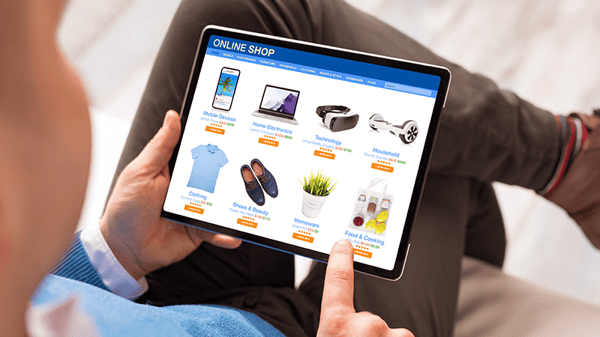
Amazon Advertising (formerly Amazon Marketing Services) is a powerful tool for vendors looking to increase visibility and sales on the platform. It offers a variety of advertising solutions, including Sponsored Products, Sponsored Brands, and Sponsored Display ads.
These ad formats enable vendors to promote their products and reach relevant customers, driving more traffic to their product listings and boosting sales.
-
Sponsored Product Ads are keyword-targeted ads that appear in search results and on product detail pages. They help improve product visibility and attract potential buyers.
-
Sponsored Brands (formerly headline search ads) allow vendors to showcase their brand and product portfolio through customizable ad creatives, featuring their logo, a headline, and multiple products. These ads also appear in search results and help to increase brand awareness.
-
Sponsored Display ads enable vendors to engage customers both on and off Amazon with display ads that use audience targeting to reach potential buyers at different stages of their shopping journey.
By leveraging Amazon Advertising, Amazon vendors can effectively reach their target audience, increase product visibility, and ultimately boost sales on the platform.
Amazon Retail Analytics (ARA) Premium
This business model allows vendors to gain more information in reporting and analytics. This software provides sales and inventory functionality and provides detailed data about traffic and the customers behaviours.
Amazon Brand Analytics
Amazon Brand Analytics is a powerful tool that provides valuable insights to vendors, and sponsored brands, enabling them to optimize their marketing strategies and make informed decisions.
#1 - Repeat Purchase Behavior Report
The Repeat Purchase Behavior Report is the only report within Amazon Brand Analytics that provides insights and data on repeat purchases. It gives vendors an overview of customer loyalty and buying habits across various dimensions such as product, customers, or order size.
This information can be used to inform promotions, discounts wholesale pricing, or other sales strategies in order to increase sales.
#2 - Demographics Report
Is an essential aspect of Amazon Brand Analytics. This feature allows vendors to gain a deeper understanding of their target audience by providing information on age, gender, income, and education level.
By utilizing this data, vendors can create targeted marketing campaigns that resonate with their audience and improve overall customer engagement.
#3 - Top Search Terms Report
Top search terms are yet another valuable piece of information provided by Amazon Brand Analytics. This insight reveals the most common search queries customers use when using amazon store or looking for products in a amazon marketplace by seller or specific category first party to amazon's marketplace seller only.
By identifying these search terms, vendors can optimize their product listings, titles, and descriptions to rank higher in Amazon's search results, leading to increased visibility and sales.
#4 - Market Basket Analysis Report
Moreover, Amazon Brand Analytics offers market basket analysis, which reveals the products that customers frequently buy together. This information enables vendors to mine product data to identify potential cross-selling or upselling opportunities, bundle products effectively, and create targeted promotions.
In conclusion, the Amazon Brand Analytics tool is an essential resource for vendors on the Amazon Vendor Central platform.
By leveraging the valuable insights provided by this tool, including repeat purchase behavior, demographics, top search terms, and market basket analysis, vendors can make data-driven decisions that lead to higher sales and better customer engagement.
Amazon Vendor Agreements
Amazon Vendor Agreements include various provisions and allowances that help facilitate a smooth business relationship between Amazon and its vendors.
So if you were using seller central, this is where you need to make sure you know your Net PPM (Pure Profit Margin) when setting up your items on Amazon.
A few essential components of these agreements are Marketing Co-Op, Freight Allowance, and Damage Allowance.
#1 Marketing Co-Op (this DOES NOT include Amazon Advertising)
refers to the collaborative efforts between Amazon and the vendor to promote and market the vendor's products. Under this arrangement, both parties contribute resources, such as advertising space, marketing materials, or promotional offers, to enhance product visibility and drive sales.
The Marketing Co-Op provisions in the agreement outline the responsibilities of both Amazon and the vendor, along with the terms and conditions of any cooperative marketing initiatives they undertake.
#2 Freight Allowance
is another important aspect of the Amazon Vendor Agreement. It stipulates the terms of transportation costs, such as shipping fees, fuel surcharges, and other related expenses incurred while delivering the vendor's products to Amazon's fulfillment centers.
This allowance aims to provide vendors with a clear understanding of their shipping obligations and the financial responsibilities associated with it. Freight Allowance provisions can also offer incentives and discounted rates for bulk shipments or meeting specific performance metrics to encourage vendors to maintain adequate inventory levels.
#3 Damage Allowance
is a provision within the Amazon Vendor Agreement that addresses product damages that may occur during shipping, handling, or storage. This allowance serves as a mutually agreed-upon compensation arrangement between Amazon and the vendor for damaged or defective products.
It outlines the responsibilities of both parties in assessing product damages and the process for determining compensation or reimbursements. Damage Allowance helps vendors minimize losses associated with damaged goods and ensures that customer satisfaction remains a top priority.
The Amazon Vendor Agreement encompasses various provisions, such as Marketing Co-Op, Freight Allowance, and Damage Allowance, that help define the business relationship between Amazon and its vendors.
These provisions protect the interests of both parties and contribute to a successful partnership in the ever-growing e-commerce landscape.
Amazon Vendor Central Guide: Frequently Asked Questions
What is Amazon Vendor Central?
Vendor Central is a direct sales channel and vendor express fulfillment platform that allows you to make products selling sell directly to Amazon as a a vendor central vs an express first-party or vendor express third party seller. It is mainly used by suppliers and manufacturers.
How do I join Amazon Vendor Central?
The platform is invite-only. If Amazon is interested they will reach out to you discuss selling process , you’ll receive an email with further instructions.
What is Amazon vendor management?
Vendor managers are employees at Amazon which act as replacements for Amazon. Typically the amazon vendor account is the amazon seller on the amazon site or the amazon seller is the amazon vendor account's customers'' primary contact person. Vendor managers are busy people working at different jobs at once. They are responsible for the following aspects: turnover.
What is my Amazon Vendor Code or ID?
You can find your Amazon Vendor Code here: Vendor Central > Settings > Agreements > Accepted / Rejected.
Vendor Central Summary
In summary, Amazon Vendor Central is a platform designed for suppliers other retailers and manufacturers to sell products directly to Amazon as first-party sellers.
This invite-only platform offers a range of tools and programs, such as Amazon Vendor Services, Amazon Vine Program, Amazon Retail Analytics (ARA) Premium, and Amazon Brand Analytics.
These features provide valuable insights, analytics, and other marketing tools and strategies to help vendors optimize their product listings, improve customer engagement, and increase sales.
Full Service Account Management for Vendor Central
beBOLD is a full service vendor agency can assist vendors in navigating the complexities of Amazon Vendor Central by providing expert guidance and support.
By leveraging our knowledge and experience with the platform, we can help vendors make the most of the tools and features available, such as optimizing product listings based on top search terms and demographics, identifying cross-selling and upselling opportunities, and utilizing the Amazon Vine Program effectively. beBOLD implements strategies and optimizes Amazon marketing services to take your brand to the next level
With beBOLD's assistance, vendors can maximize their potential on Amazon Vendor Central, leading to higher sales and better customer engagement.

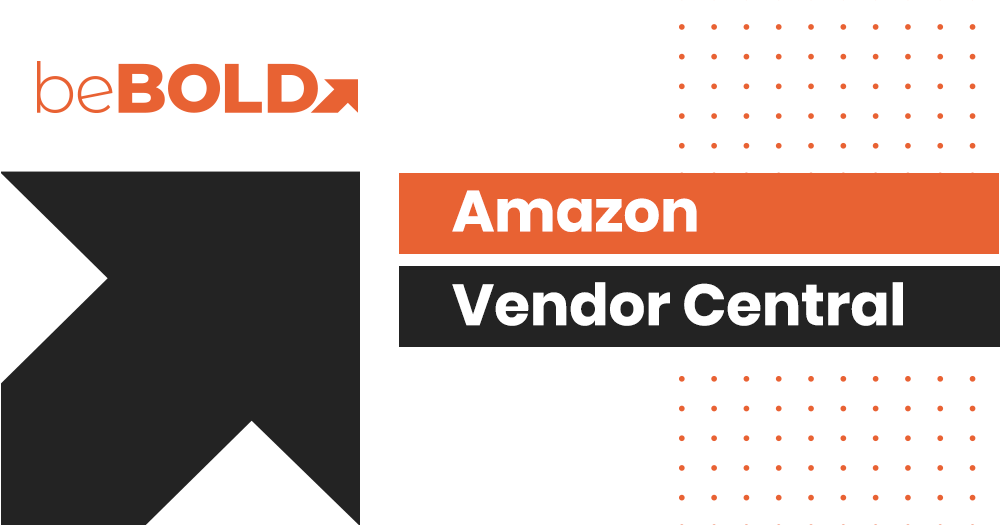
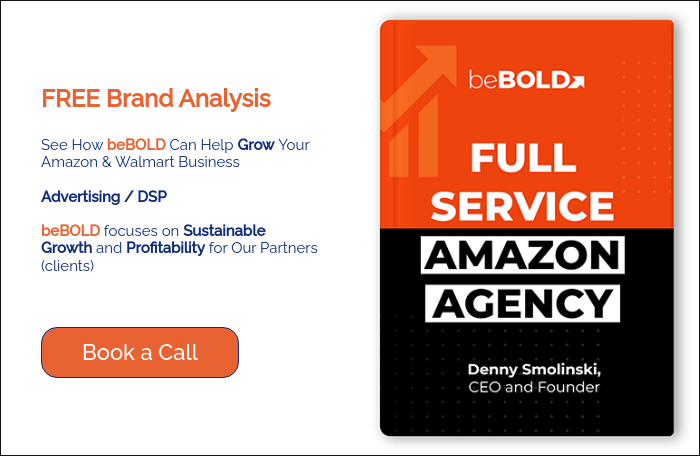


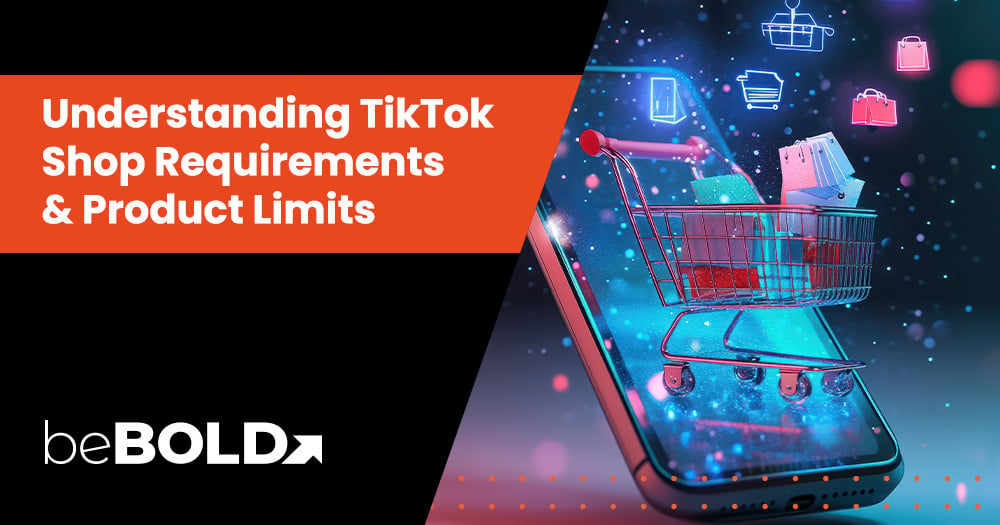
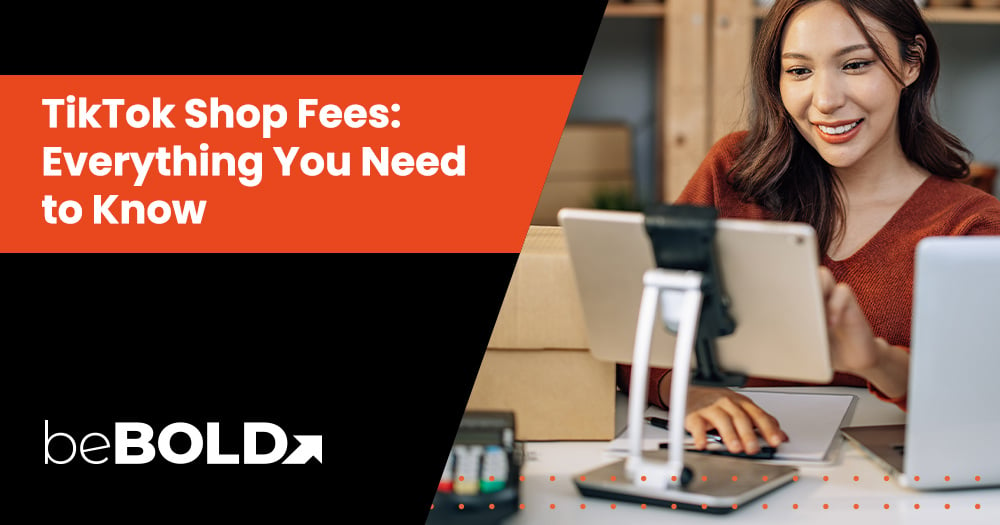
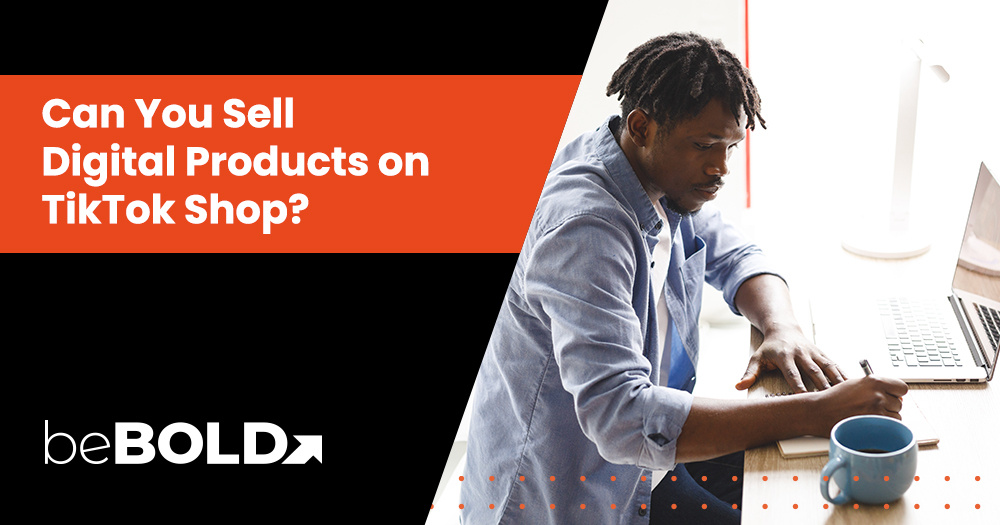
Comments